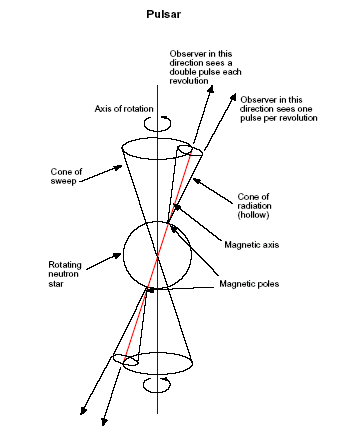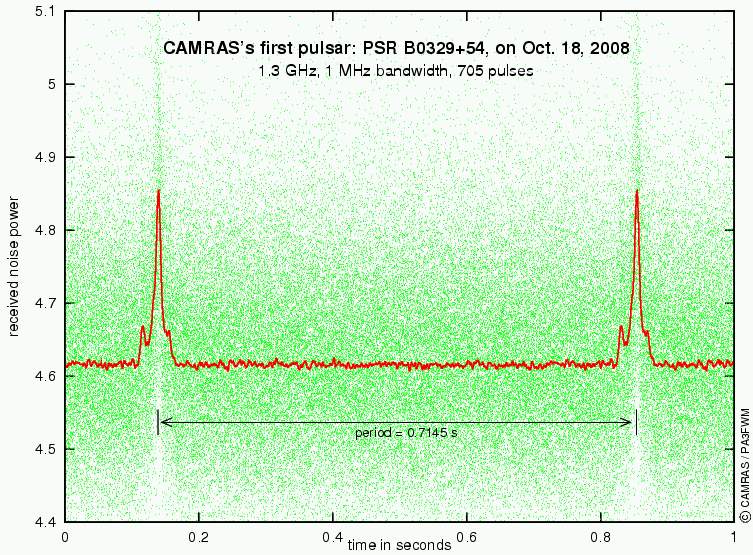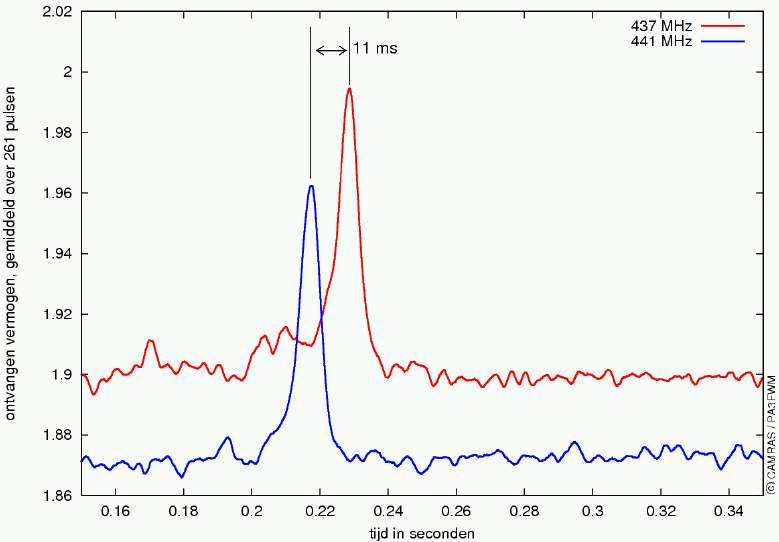| Pulsar PSR B0329+54 |
Another milestone was reached on Oct 18/19th 2008.
During this weekend PE1NUT and PA3FWM succeeded to detect the first Pulsar signals with our 25m Radio Telescope! Congrats guys!!!.
Pulsars are being observed since 1967 when Jocelyn Bell detected the first pulsar.

The Crab pulsar spins at a rate of 30 times per second. The pulsar 1937+21 in Cygnus pulses 624 times per second. We at Earth receive this emission as a signal produced by a cosmic clock. Over the brief period observing pulsars we have noticed that they a gradually slowing down. Their energy is dissipating with age. After correction for this effect, some millisecond pulsars are at least as accurate at timekeeping as the best atomic clocks. The rates at which pulsars slowdown has been helpful in confirming aspects of Einstein's theory of general relatively. Also, the timing of pulsars can be useful in determining properties of the interstellar medium.
A Pulsar is a neutron-star rotating very fast around its axis, at the same time generating radio emission signals. Looking into the direction of a Pulsar it will appear like a pulsating lighthouse.

Above information is extracted from JPL's document "Basics of Radio Astronomy" and provides a good indication how pulsars behave.
The emission generated by a pulsar is very low and difficult to measure since it needs a wideband receiver and long time integration of the information. The first tests were done with a 48kHz bandwidth WebSDR based receiver. This setup failed to find pulsars signals. This time A/D converters with MHz's bandwidths followed by a FPGA were used.
Looking to the strongest Pulsar: PSR B0329+54, with a period of 0.715sec and a pulse duration of 6.6msec, the measurements started at 432MHz since here the pulsar signals should be stronger then on 1296Mhz. It was on 1296MHz, where the pulsar was discovered initially.
After some minutes of Fourier analyzing, a peak signal appears out of the noise, indicating the pulsar typical pulsing rate. The graph below is the result of averaging over 705 pulses.

After this result the pulsar has been detected on 432MHz as well. Here another interesting effect was found: dispersion. Meaning that pulsar signals arrive at earth different in time, related to the frequency used.
Below graph shows the difference of 11ms between 1MHz wide measurements at 437MHz and 431MHz.

The results of these measurements are certainly stimulating the CAMRAS group in their goal the restore the functionality of the Radio Telescope of Dwingeloo.